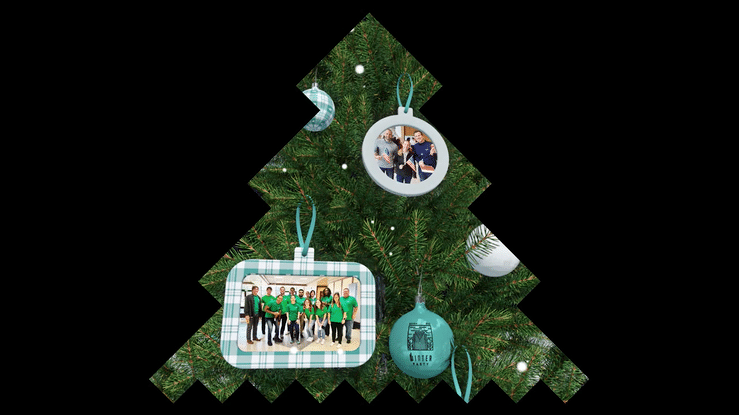setting the stage
They say context is key, and with a significant portion of our work played in live settings, we could not agree more. The full scope of the setting must be considered to really “set the stage,” creating a memorable experience for the audience. From the scale and colors to the visibility and tone, every detail counts. Below are three case studies.
Case Study 1: Dance Projections
As touched on in these blog posts, dance projections are super fun. We’re aiding in a performance! Generally, look and feel take precedence in dance settings, but it must hit the right balance of pretty-yet-subtle. We don’t want our projections to take attention away from the dancers. If we do our job right, the performance is enhanced by the projection. Hansel and Gretel was an exceptional case because it told a narrative, complete with tonal ups and downs, and used text throughout. Our animations had to match the story's tones, and the text had to be easy to read. We used an aged (not bright white, more on that in case study 2) border around the scenes to include text and act as a buffer for the projection edge and dancers’ shadows.
Case Study 2: Blue Circle Productions LEDs
Not all stages come in standard sizes. Our friends at Blue Circle Productions have been known to get experimental with their LED setups. The possibilities are endless! A recent example of these boards' versatility was Devon Energy’s 2022 Winter Party. There was one setup with three triangles side-by-side. It allowed a large focal board in the middle with two boards on either side for ambient animations, like animated logos. Their event colors were sage green and white. LED boards are notoriously bright, so we used sage as the background color and white as an accent color. That way, people could enjoy the animations without 😎. There was also an 18-foot Christmas tree (!!) LED board bejeweled with ornaments displaying company photos. The ornaments had to be proportional to the tree in the animation but also in real life. Too small and you can’t see the details of the picture; too big and it’s just silly.
Case Study 3: Old Hat Games
A classic game we do for sports venues is a derby race. The vehicles (Toyota Tundras, go-karts) and drivers (coaches, mascots) may change, but our approach to these live games stays the same. Most of our in-person animations focus on visual parameters, but audio parameters are also considered. For a game day setting, we know our sports animations need fun sound effects, but critical information should not be solely conveyed auditorily. These are loud venues! There might even be an announcer commenting on the game or music playing over our animation, so our sport animation games need to be enjoyable without audio, using strong visual messaging and cues. Derbies are a prime example of audio: an announcer voiceover, sound effects, and music all support the visuals.
Animations don't just set the stage, literally. They create an environment for and complement the event’s tone, enhancing the audience’s experience.



